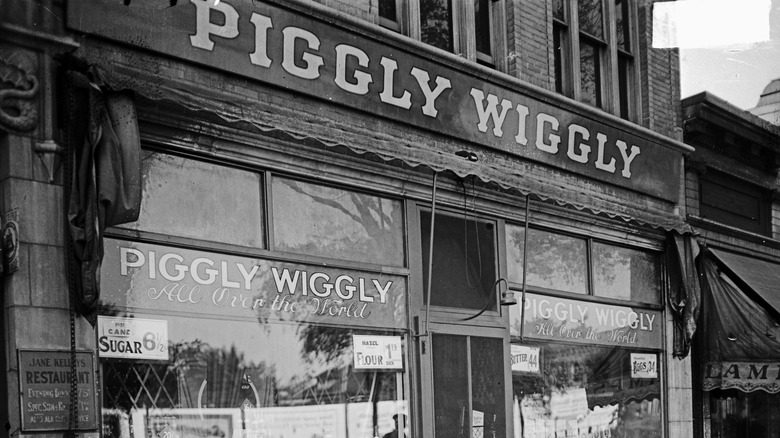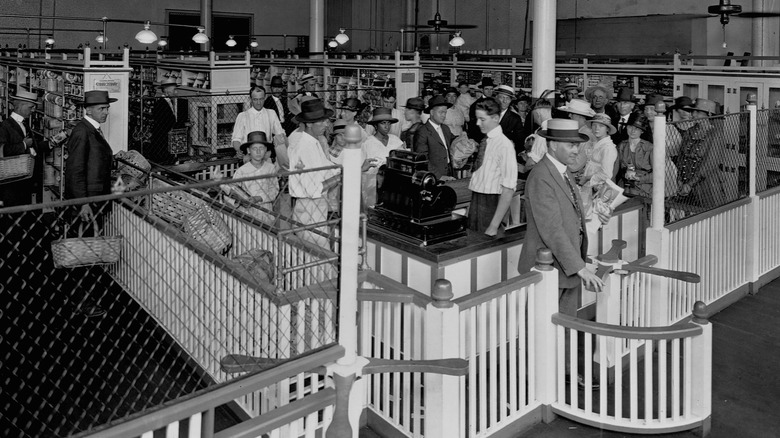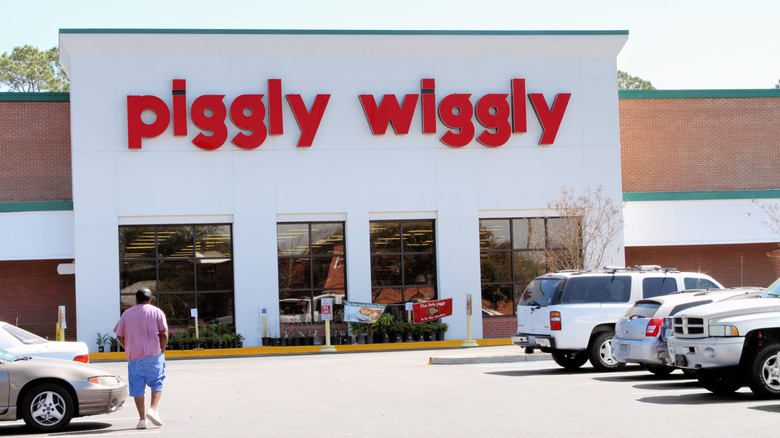The World's First Supermarket Was Invented To End Grocery Delivery
Grocery stores are such a part of everyday life that it could be difficult to imagine a time when they were any different. But grocery stores as we know them have only existed for about a century.
In the early days of the United States, meat and produce were sold in farmers markets, by traveling salesmen or street peddlers, or at individual merchant establishments, like butcher shops or bakeries. But over time, general stores popped up to concentrate goods and wares in one location, especially in rural areas where a population wasn't large enough to support a broad variety of individual merchants.
But the first supermarket as we think of the concept today was launched in 1916 in Memphis, Tennessee, under the name of Piggly Wiggly. Yes, the same Piggly Wiggly that still operates hundreds of stores throughout the Midwest and American South. Only the grocery store we take for granted today was considered a big risk when it first opened its doors.
The history of Piggly Wiggly
Before Piggly Wiggly, grocery stores looked a lot different. Instead of aisles where customers could browse a variety of products, grocery items were stored out of sight. Upon entering a store, customers would be greeted by a clerk, who would fetch the desired food items and bring them to the customer. Think of it like Instacart for the Gilded Age.
This may have made sense in a time when grocery stores might only have a single option when it came to things like flour, butter, or milk. But it meant that a customer would never really know what they were getting until it was handed to them.
It was also an impractical practice when factoring in the time and labor involved. A single clerk would have to run around the shop, gathering items while the shoppers stood idly by. Piggly Wiggly founder Clarence Saunders thought he could save a lot of time and money by allowing customers to adopt a self-service style of shopping.
The advent of self-service grocery shopping
Saunders' idea was considered pretty outlandish at the time, and it could have easily been a flop. But customers were attracted by the idea of getting to select their own products, and having options laid out in long grocery store aisles prompted Saunders to diversify his offerings. It paved the way for the supermarkets we know today, with their twenty varieties of ketchup and hundreds of boxes of dried pasta to choose from.
This approach also saved both Saunders and the consumer money, because the cost of paying the clerk to find and deliver the goods could be eliminated, and those savings could be used to offset the cost of the goods themselves. It also gave shoppers a sense of agency and choice that is quintessential to the American capitalist ideology that drives many modern food businesses. This business plan was so popular that Saunders franchised it out, resulting in the popular grocery store chain we still shop at today.



